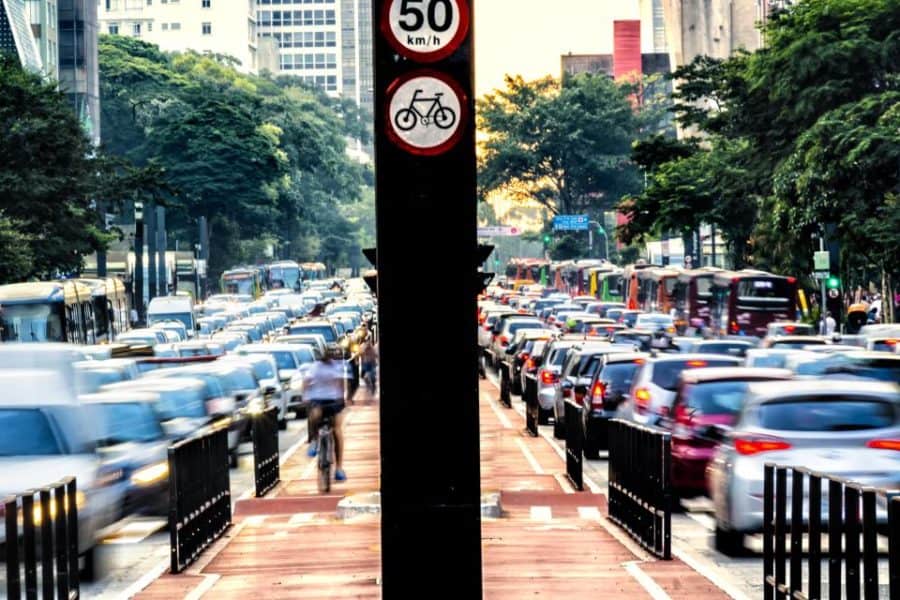For decades, many transportation experts have argued that the best way to reduce urban traffic jams is to put a price on crowded roads. Often called “congestion pricing” these policies are quickly advancing beyond blunt instruments like freeway tolls. Finely calibrated prices on specific roads also offer regulators powerful tools to reduce costly side effects of dense traffic, such as traffic fatalities, carbon emissions, and noise.
However, one legitimate concern around the widespread adoption of road pricing is that it could aggravate economic inequality, enabling wealthy users to enjoy quick travel times while low-income travelers are effectively priced out of the faster roads and bear the burden of being stuck in traffic. Worse still, road pricing could aggravate economic segregation by pushing people with lower incomes to homes farther from a city’s center.
But a team of researchers, primarily at Stanford’s Autonomous Systems Laboratory, has proposed an approach that could improve economic equity while reducing congestion. The key idea: Refund tolls in a way that redistributes some of the money from rich to poor and ensures all drivers are as well off or better than they were before. Lower-income drivers would get back more money than they pay out. Wealthier drivers might get some money back, but much or most of their compensation would in the form of time they don’t waste in traffic jams. That’s a potentially significant compensation, because affluent people often pay more to save time.
“We can achieve both the goals of equity and of efficiency by enabling people to trade time for money,” says Devansh Jalota, a doctoral candidate at the Autonomous Systems Laboratory who carried out much of the work. “Some people can reduce their travel time by paying additional tolls, while others are compensated for taking longer routes.”
Read the study, “When Efficiency Meets Equity in Congestion Pricing and Revenue Refunding Schemes.”
The scholars say the approach wouldn’t be practical without using artificial intelligence and big data to accurately predict how people in a particular area will respond to different pricing schemes. Every city is different, and a huge number of variables affect traffic flow, but the researchers argue that AI makes their approach realistic.
“Advances in big data and machine learning have enabled us to design better autonomous vehicles by learning patterns in the behavior of human drivers,” says Jalota. “These tools can play a similar role here in calibrating the pricing models to make our proposed schemes work.”
The new work, funded in part by the National Science Foundation, was overseen by Marco Pavone, professor of aeronautics and astronautics and director of the Stanford Autonomous Systems Laboratory. The other co-authors were Stephen Zoepf, head of policy at the startup Lacuna Technologies; Hamsa Balakrishnan, professor of aeronautics and astronautics at the Massachusetts Institute of Technology; and Kiril Solovey and Karthik Gopalakrishnan, postdoctoral scholars at the Stanford Autonomous Systems Lab.
Old Idea, New Approach
Traffic congestion imposes huge costs in mega-cities around the world, from New York City to Beijing. Jalota, who is pursuing a PhD in computational mathematics, said he had been motivated in part by his own experience growing up in Mumbai.
The idea of road pricing has been around for almost a century, and ideas for refund schemes have been around for 30 years. None of those ideas, however, seemed capable of resolving the tension between traffic efficiency and economic equity.
The breakthrough idea was to use the toll revenues to achieve two simultaneous objectives. First, the refund scheme is designed such that nobody ends up paying more than before for using the roads, after accounting for the financial benefits of lower travel times. Higher-income people would get lower refunds, and some would get no refunds at all, but they would get higher benefits from reduced travel times. Second, the refund scheme is designed to improve equity outcomes by ensuring that lower-income people would receive more than they pay, especially if they choose slower or less direct routes.
The result, says Pavone, should actually be better than just reducing traffic congestion. The more efficient road traffic becomes, the more toll revenue becomes available to help reduce inequality. As a result, efficiency and economic equity should improve simultaneously.
Moving from Model to Real Life
In practice, the researchers caution, the approach takes a tremendous amount of data and computation. Developing a system for a city would require testing different pricing schemes, collecting data, and using machine learning tools to build specific behavioral models for how different travelers value money and time. Each city has its own dynamics, which will be affected by income levels, geography, zoning, and countless other factors.
“If we want to deploy the whole scheme, we need to understand peoples’ behavior,” says Jalota. “We have a general behavioral model, but we need to learn exactly what the parameters are.” That said, the researchers argue, the basic approach of refunds and redistribution should work regardless of the specific nuances in a given city.
“This really does seem to be a win-win,” says Pavone. “Instead of exacerbating existing inequities, road pricing and refunds could both protect the most vulnerable and improve the efficiency of our transportation system.”
Read the study, or watch the authors discuss their work.

